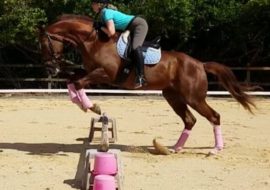
Assertiveness – The Art of Effective Communication
This post builds from my previous one on Fair Fighting but now we look more explicitly at our role in conflicts and social situations in general. As social creatures, humans tend to spend a lot of time interacting with other persons so making sure that we get our point across well is important. By “Well” I mean that we express what we would like in a way that is clear and concise, does not compromise our values or self-respect and is done in a way that builds the relationship by allowing the other person to respond in the most helpful way. If we get more of what we want from a relationship, whatever that may be, eg: love, attention, connections, assistance, then we are more likely to hang around. Likewise, if the other person gets more of what he/she wants then they are more likely to stay around too. This Win-Win situation is established through a communication style known as “Assertiveness.”
There are four primary Communication Styles: Aggressive, Passive, Passive-Aggressive and Assertive. Most of us tend to identify with one style more than the others but Assertiveness is possible, no matter where you start. I like to think about these as a balance between “My Needs” (What I want) and “The Relationship” (The other person will stay).
Aggressive is probably the most easily recognized, this is going to be blunt and threatening, eg: “If you don’t do this I’ll (insert threat).” In the Aggressive Style, “My Needs” are top priority – I want what I want and I want it now. The difficulty with this one is that it works in the short-term as persons will often give us what we want in the moment (or we get punched), but long-term we compromise our self-respect and persons don’t tend to stay around.
Passive is the flip side. For the Passive Style, “The Relationship” is top priority so persons are unlikely to state an opinion, make a request or say no out of fear that the other person will judge, be hurt or leave; eg: “I don’t mind. What would you like?” Again, short-term this works as people often like people who are agreeable, but if we do this for too long we often become resentful and eventually explode or have to cut that person off, neither of which is in line with our goal of maintaining the relationship. Furthermore, if a person actually cares about us, they often want to know what we want and like to make sure that we are okay with what is going on too.
Passive-Aggressive is a style often missed in most communication trainings but I think it is an important one. In the Passive-Aggressive Style we see sarcasm; this is going to be anything that you can snap your fingers or roll your eyes too, eg: “Sure… I’d love to go there.” This is really a Lose-Lose situation as we kind of express our dissatisfaction but it is done in an unclear way; our body language and tone don’t match our words so this style is often met with confusion, aggression or the person goes along with it and we end up going where we didn’t actually want to go.
Assertiveness is clear, effective communication that expresses our needs/preferences in a situation in a way that keeps the line of communication open so that we can then hear the needs/preferences of the other person as well as we move towards a solution or compromise. In this way, we learn about the other person and what he/she likes and wants while they learn about us and what we like and want. This helps to bring us closer to the persons we care about (or have to live/work with) and can help us to be more productive and satisfied with our lives.
If Assertiveness were easy then we would all be clear communicators but it is a skill that takes time, patience and practice. It is often frustrating for persons who tend to be more aggressive because there is not that instant gratification. It is often scary and intimidating for persons who are more passive because it is hard to believe that others care about our needs if we don’t feel like they are worthwhile. Therefore, before trying to be assertive, take a deep breath and relax. Whether we tend to get angry or anxious, reducing the emotions will help us to stay calm, focused and most responsive in the situation.
Having an idea of what you want from the situation is also helpful so that you have a clear goal and plan in mind; you can even practice what you want to say beforehand so that it comes out with a more natural feel. A great framework for practicing Assertivness is to use “I Statements” (“I feel ____ when ____. What I would like is ____.”) I Statements put the focus on you so that it does not raise the emotions and defensiveness of the other person so that they are able to respond most helpfully.
Finally, be clear and concise with what you say so that the request/statement is less ambiguous and most easily understood. If you do not get the reaction that you were anticipating, it is okay to stop and reframe what you said to try to keep the conversation in the helpful realm.
For more information on the Communication Styles, have a quick look at an interview that I did on Cayman 27 on The Art of Communication.
Ready. Set. Breath. and Assert yourself. 🙂
-Dr. Bodden



